Laser-Patternable Graphene Field Emitters for Plasma Displays
Abstract
:1. Introduction
2. Materials and Methods
3. Results and Discussion
4. Conclusions
Supplementary Materials
Author Contributions
Funding
Conflicts of Interest
References
- Chen, S.; Yang, W. Flexible low-dimensional semiconductor field emission cathodes: Fabrication, properties and applications. J. Mater. Chem. C 2017, 5, 10682–10700. [Google Scholar] [CrossRef]
- Hana, T.H.; Kimb, H.; Kwon, S.J.; Lee, T.W. Graphene-based flexible electronic devices. Mater. Sci. Eng. R. 2017, 118, 1–43. [Google Scholar] [CrossRef]
- Wu, Z.; Huang, Y.; Chen, R. Opportunities and challenges in flexible and stretchable electronics: A panel discussion at ISFSE2016. Micromachines 2017, 8, 129. [Google Scholar] [CrossRef]
- Schoenbach, K.H.; Becker, K. 20 years of microplasma research: A status report. Eur. Phys. J. D 2016, 70, 29. [Google Scholar] [CrossRef]
- Bonheur, K. Advantages and disadvantages of plasma display panel. Available online: https://www/profolus.com/topics/advantages-and-disadvantages-of-plasma-display-panel/ (accessed on 23 October 2018).
- Becker, K.H.; Schoenbach, K.H.; Eden, J.G. Microplasma and applications. J. Phys. D Appl. Phys. 2006, 39, R55–R70. [Google Scholar] [CrossRef]
- Venkatraman, V.; Garg, A.; Peroulis, D. Direct measurements and numerical simulations of gas charging in microelectromechanical system capacitive switches. Appl. Phys. Lett. 2012, 100, 083503. [Google Scholar] [CrossRef] [Green Version]
- Venkattraman, A. Theroy and analysis of operating modes in microplasmas assisted by field emitting cathodes. Phys. Plasmas 2015, 22, 057102. [Google Scholar] [CrossRef]
- Chen, L.; Yua, H.; Zhong, J.; Song, L.; Wu, J.; Su, W. Graphene field emitters: A review of fabrication, characterization and properties. Mater. Sci. Eng. B 2017, 220, 44–58. [Google Scholar] [CrossRef]
- Santandrea, S.; Giubileo, F.; Grossi, V.; Santucci, S.; Passacantando, M.; Schroeder, T.; Lupina, G.; Di Bartolomeo, A. Field emission from single and few-layer graphene flakes. Appl. Phys. Lett. 2011, 98, 163109. [Google Scholar] [CrossRef]
- Eda, G.; Unalan, H.E.; Rupesinghe, N.; Amaratunga, A.J.; Chhowalla, M. Field emission from graphene based composite thin films. Appl. Phys. Lett. 2008, 93, 233502. [Google Scholar] [CrossRef] [Green Version]
- Wu, Z.S.; Pei, S.; Ren, W. Field emission of single-layer graphene films prepared by electrophoretic deposition. Adv. Mater. 2009, 21, 1756–1760. [Google Scholar] [CrossRef]
- Jiang, L.; Yang, T.; Liu, F. Controlled synthesis of large-scale, uniform, vertically standing graphene for high-performance field emitters. Adv. Mater. 2013, 25, 250–255. [Google Scholar] [CrossRef] [PubMed]
- Kim, H.Y.; Jeong, S.; Jeong, S.Y.; Baeg, K.J.; Han, J.T.; Jeong, M.S.; Lee, G.W.; Jeong, H.J. Chemically doped three-dimensional porous graphene monoliths for high-performance flexible field emitters. Nanoscale 2015, 7, 5495–5502. [Google Scholar] [CrossRef] [PubMed]
- Jeong, H.J.; Kim, H.Y.; Jeong, H.D.; Jeong, S.Y.; Han, J.T.; Lee, G.W. Arrays of vertically aligned tubular-structured graphene for flexible field emitters. J. Mater. Chem. 2012, 22, 11277–11283. [Google Scholar] [CrossRef]
- Jeong, H.J.; Jeong, H.D.; Kim, H.Y.; Jeong, S.Y.; Han, J.T.; Lee, G.W. Self-organized graphene nanosheets with corrugated, ordered tip structures for high-performance flexible field emission. Small 2013, 9, 2182–2188. [Google Scholar] [CrossRef]
- Ye, R.; James, D.K.; Tour, J.M. Laser-induced graphene: From discovery to translation. Adv. Mater. 2019, 31, 1803621. [Google Scholar] [CrossRef]
- Lin, J.; Peng, Z.; Liu, Y.; Ruiz-Zepeda, F.; Ye, R.; Samuel, E.L.G.; Yacaman, M.J.; Yakobson, B.I.; Tour, J.M. Laser-induced porous graphene films from commercial polymers. Nat. Commun. 2014, 5, 5714. [Google Scholar] [CrossRef]
- Ferrari, A.C.; Meyer, J.C.; Scardaci, V.; Casiraghi, C.; Lazzeri, M.; Mauri, F.; Piscanec, S.; Jiang, D.; Novoselov, K.S.; Roth, S.; et al. Raman spectrum of graphene and graphene layers. Phys. Rev. Lett. 2006, 97, 187401. [Google Scholar] [CrossRef]
- Fowler, R.H.; Nordheim, L. Electron emission in intense electric fields. Proc. R. Soc. Lond. Ser. A 1928, 119, 173–181. [Google Scholar] [CrossRef]
- Garg, R.; Dutta, N.K.; Choudhury, N.R. Work function engineering of graphene. Nanomaterials 2014, 4, 267–300. [Google Scholar] [CrossRef]
- Kvashnin, D.G.; Sorokin, P.B.; Bruning, J.W.; Chernozatonskii, L.A. The impact of edges and dopants on the work function of graphene nanostructures: The way to high electronic emission from pure carbon medium. Appl. Phys. Lett. 2013, 102, 183112. [Google Scholar] [CrossRef]
- Yang, N.; Yang, D.; Chen, L.; Liu, D.; Cai, M.; Fan, X. Design and adjustment of the graphene work function via size, modification, defects, and doping: A first-principle theory study. Nanoscale Res. Lett. 2017, 12, 642. [Google Scholar] [CrossRef] [PubMed]
- Leenarerts, O.; Partoens, B.; Peeters, F.M.; Volodin, A.; Van Haesendonck, C. The work function of few-layer graphene. J. Phys. Condens. Matter 2017, 29, 035003. [Google Scholar] [CrossRef] [PubMed]
- Soin, N.; Roy, S.S.; Roy, S.; Hazra, K.S.; Misra, D.S.; Lim, T.H.; Hetherington, C.J.; McLaughlin, J.A. Enhanced and stable field emission from in situ nitrogen-doped few-layered graphene nanoflakes. J. Phys. Chem. C 2011, 115, 5366–5372. [Google Scholar] [CrossRef]
- Song, C.; Yu, K.; Yin, H.; Fu, H.; Zhang, Z.; Zhang, N.; Zhu, Z. Highly efficient field emission properties of a novel layered VS2/ZnO nanocomposite and flexible VS2 nanosheet. J. Mater. Chem. C 2014, 2, 4196–4202. [Google Scholar] [CrossRef]
- Arif, M.; Heo, K.; Lee, B.Y.; Lee, J.; Seo, D.H.; Seo, S.; Jian, J.; Hong, S. Metallic nanowire-graphene hybrid nanostructures for highly flexible field emission devices. Nanotechnology 2011, 22, 355709. [Google Scholar] [CrossRef]
- Cui, Y.; Chen, J.; Zhang, X.; Lei, W.; Di, Y.; Wang, Q. Flexible field emission devices based on barium oxide nanowires. J. Disp. Tech. 2015, 12, 466–471. [Google Scholar] [CrossRef]
- Zulkifli, Z.; Kalita, G.; Tanemura, M. Fabrication of transparent and flexible carbon-doped ZnO field emission display on plastic substrate. Phys. Status Solidi RRL 2015, 9, 145–148. [Google Scholar] [CrossRef]
- Chen, H.; Iliev, M.N.; Liu, J.R.; Ma, K.B.; Chu, W.K.; Badi, N.; Bensaoula, A.; Svedberg, E.B. Room-temperature deposition of diamond-like carbon field emitter on flexible substrates. Nucl. Instr. Meth. Phys. Res. B 2006, 243, 75–78. [Google Scholar] [CrossRef]
- Cui, Y.; Chen, J.; Di, Y.; Zhang, X.; Lei, W. High performance field emission of silicon carbide nanowires and their applications in flexible field emission displays. AIP Adv. 2017, 7, 125219. [Google Scholar] [CrossRef] [Green Version]
- Yoon, B.J.; Hong, E.H.; Jee, S.E.; Yoon, D.M.; Shim, D.S.; Son, G.Y.; Lee, Y.J.; Lee, K.H.; Kim, H.S.; Park, C.G. Fabrication of flexible carbon nanotubes field emitter arrays by direct microwave irradiation on organic polymer substrate. J. Am. Chem. Soc. 2005, 127, 8234–8235. [Google Scholar] [CrossRef] [PubMed]
- Ghosh, D.; Ghosh, P.; Tanemura, M.; Hayashi, A.; Hayashi, Y.; Shinji, K.; Miura, N.; Yusopa, M.Z.; Asakad, T. Highly transparent and flexible field emission devices based on single-walled carbon nanotubes films. Chem. Commun. 2011, 47, 4980–4982. [Google Scholar] [CrossRef] [PubMed]
- Sankaran, K.J.; Tai, N.H.; Lin, I.N. Flexible electron field emitters fabricated using conducting ultrananocrystalline diamond pyramidal microtips on polynorbornene films. Appl. Phys. Lett. 2014, 104, 031601. [Google Scholar] [CrossRef]
- Duy, L.X.; Peng, Z.; Li, Y. Laser-induced graphene fibers. Carbon 2018, 126, 472–479. [Google Scholar] [CrossRef]
- Li, X.; Cai, W.; Teh, K.S.; Qi, M.; Zang, X.; Ding, X.; Cui, Y.; Xie, Y.; Wu, Y.; Ma, H.; et al. High-voltage flexible microsupercapacitors based on laser-induced graphene. ACS Appl. Mater. Interfaces 2018, 10, 26357–26364. [Google Scholar] [CrossRef]
- Bobinger, M.R.; Romero, F.J.; Salinas-Castillo, A.; Becherer, M.; Lugli, P.; Morales, D.P.; Rodriguesz, N.; Rivadeneyra, A. Flexible and robust laser-induced graphene heaters photothermally scribed on bare polyimide substrates. Carbon 2019, 144, 116–126. [Google Scholar] [CrossRef]
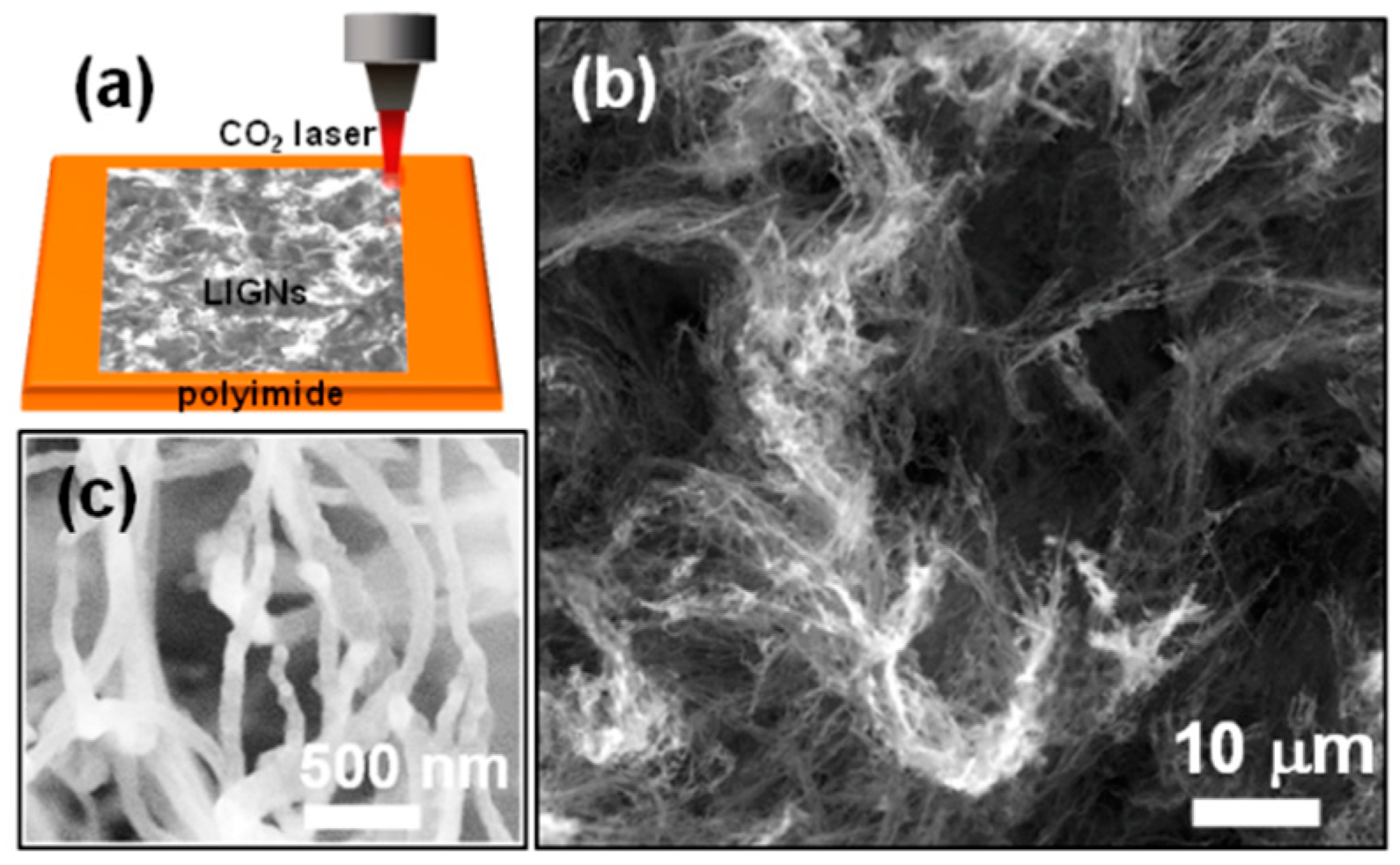
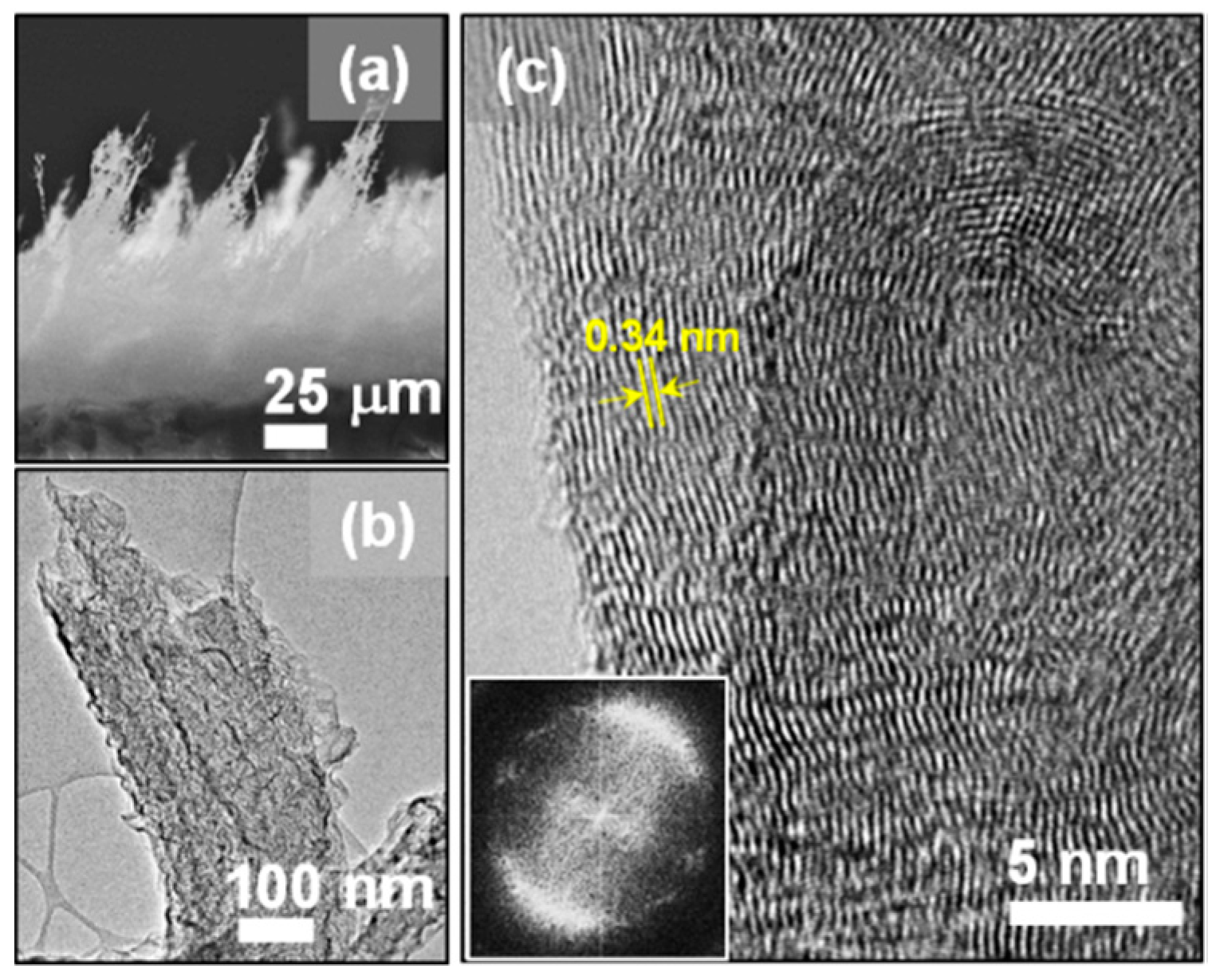
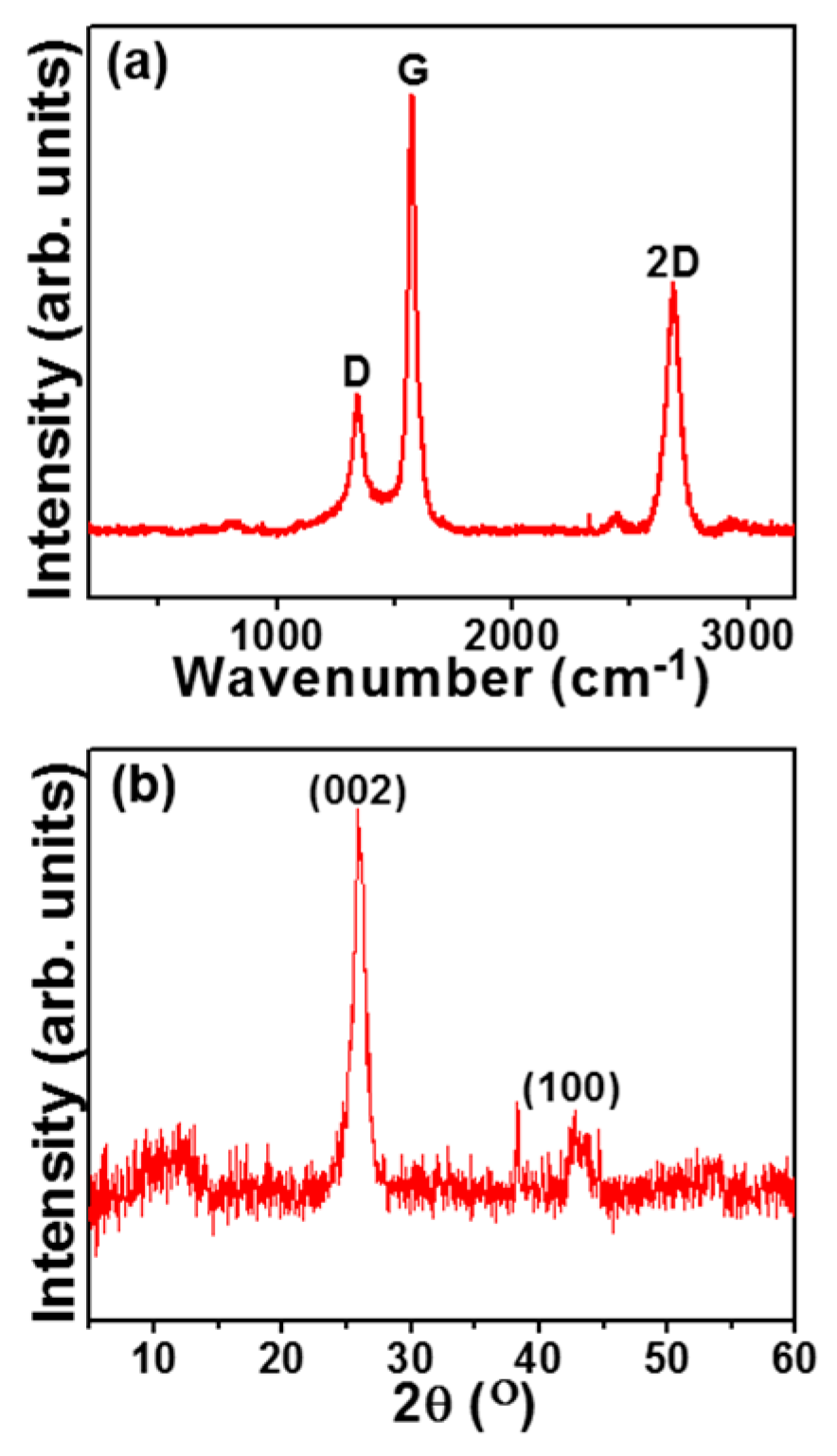
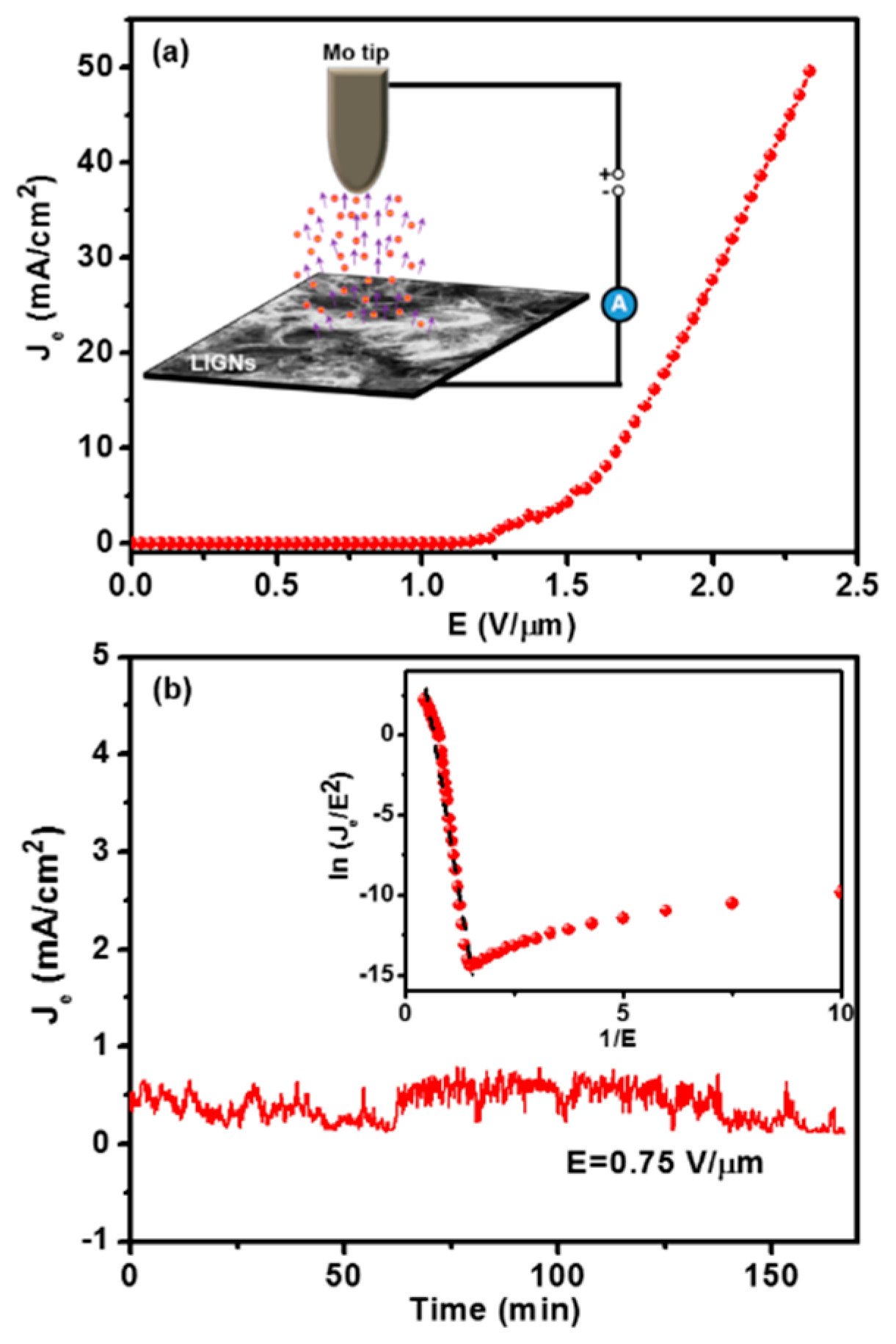
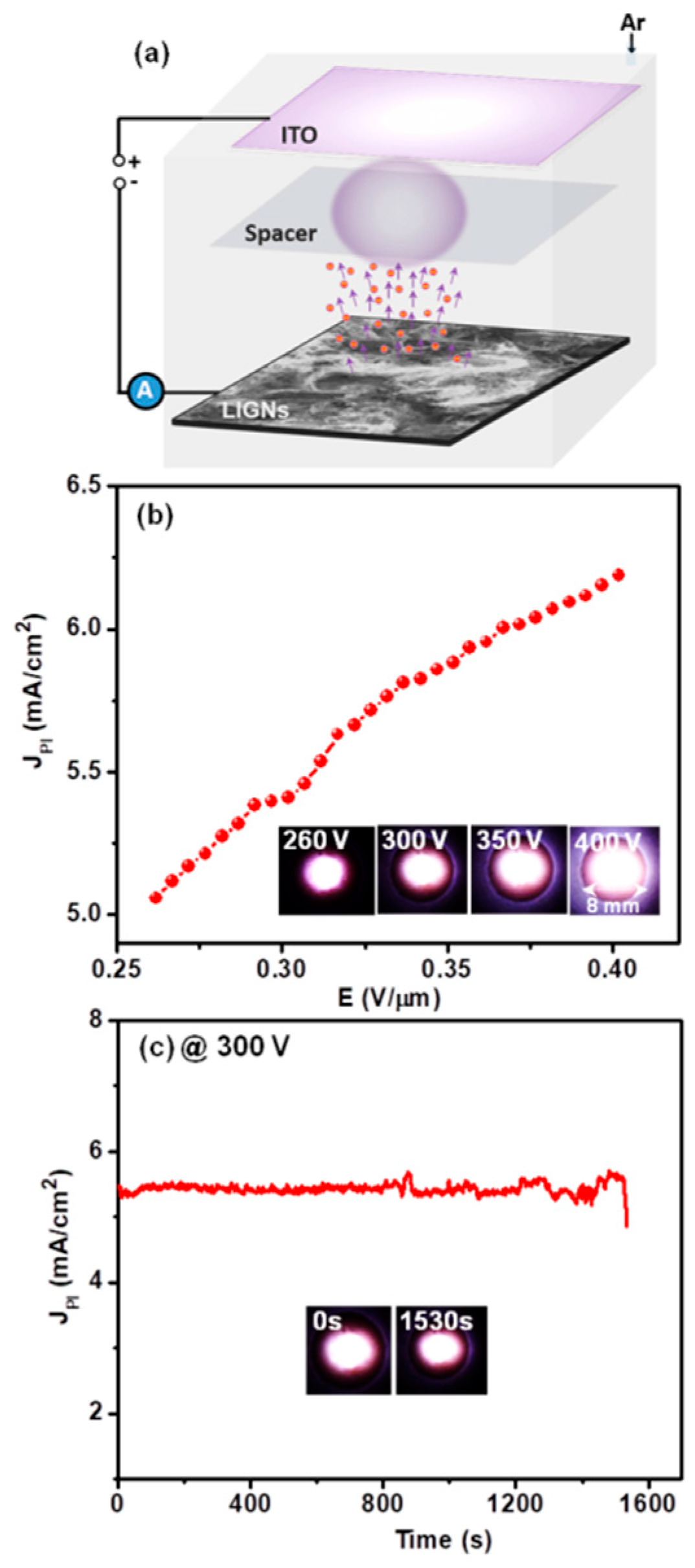
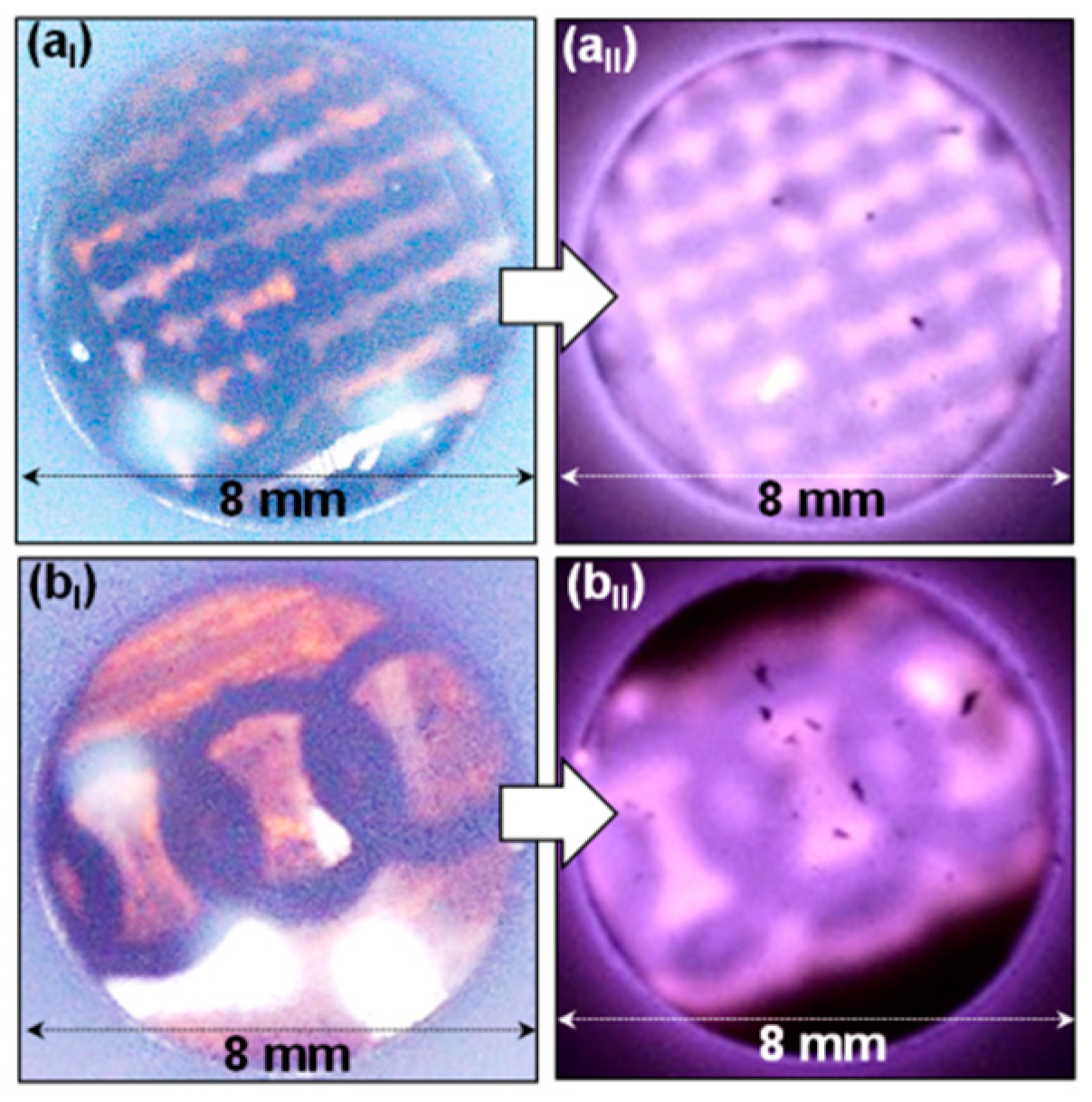
© 2019 by the authors. Licensee MDPI, Basel, Switzerland. This article is an open access article distributed under the terms and conditions of the Creative Commons Attribution (CC BY) license (http://creativecommons.org/licenses/by/4.0/).
Share and Cite
Sankaran, K.J.; Bikkarolla, S.K.; Desta, D.; Roy, S.S.; Boyen, H.-G.; Lin, I.-N.; McLaughlin, J.; Haenen, K. Laser-Patternable Graphene Field Emitters for Plasma Displays. Nanomaterials 2019, 9, 1493. https://doi.org/10.3390/nano9101493
Sankaran KJ, Bikkarolla SK, Desta D, Roy SS, Boyen H-G, Lin I-N, McLaughlin J, Haenen K. Laser-Patternable Graphene Field Emitters for Plasma Displays. Nanomaterials. 2019; 9(10):1493. https://doi.org/10.3390/nano9101493
Chicago/Turabian StyleSankaran, Kamatchi Jothiramalingam, Santosh Kumar Bikkarolla, Derese Desta, Susanta Sinha Roy, Hans-Gerd Boyen, I-Nan Lin, James McLaughlin, and Ken Haenen. 2019. "Laser-Patternable Graphene Field Emitters for Plasma Displays" Nanomaterials 9, no. 10: 1493. https://doi.org/10.3390/nano9101493
APA StyleSankaran, K. J., Bikkarolla, S. K., Desta, D., Roy, S. S., Boyen, H.-G., Lin, I.-N., McLaughlin, J., & Haenen, K. (2019). Laser-Patternable Graphene Field Emitters for Plasma Displays. Nanomaterials, 9(10), 1493. https://doi.org/10.3390/nano9101493





